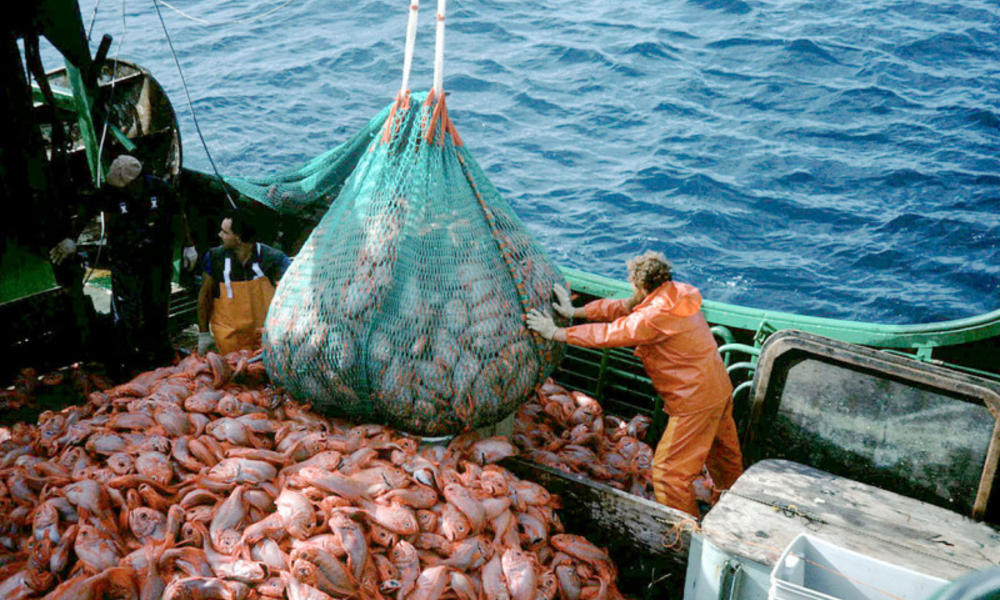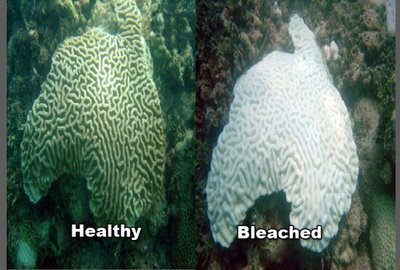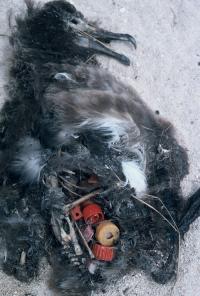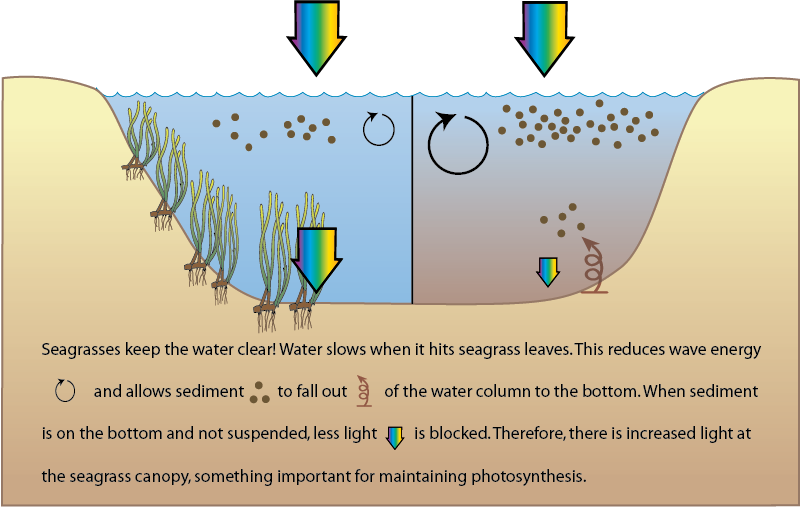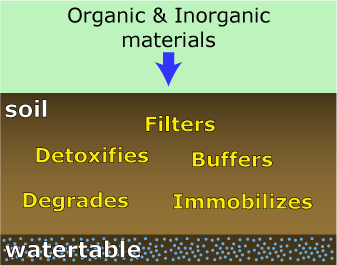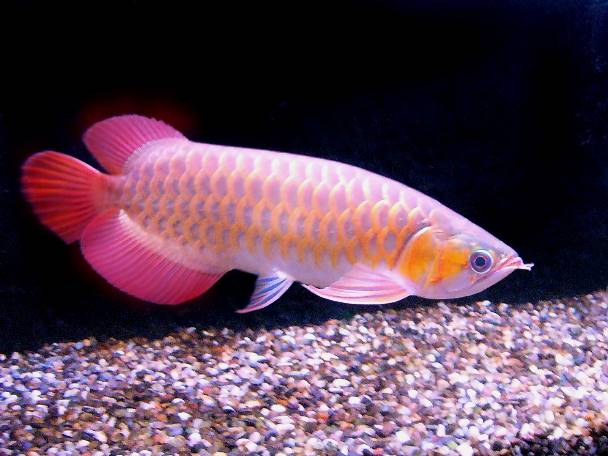Friday, March 22, 2013
Navy
The two cadets that came in to talk to the class were very informative! Allen put together a great presentation on him being in the Navy for 7 years, and all the education, traveling, military experiences he had been through. While he spoke mostly of working on a ship, his 20yr old partner was trained to work in submarines. What i found most interesting was all the places that Allen had been, 8 countries and 13 ports in the Philippines. This talk increased my knowledge of the ocean in how our military uses the ocean to their advantage. The one thing that I really remember from this presentation are his experiences in different countries, learning their cultures, shopping, and his lost wallet experience, mostly because of how different and interesting they were.
whales
Flukes are used to ID whales because they are like fingerprints, each different and unique.
Scientists need this data to learn and observe from the whales. Scientists can keep track of population and migration as well. The most difficult part of the lab was trying to match the pictures with the numerous other extremely identical pictures. The Lab would be easier and better if their were less pictures to match with, and if the printing was better instead of mostly black.
picture: http://wildwhales.org/wp-content/themes/wildwhales/images/4flukes_popup.jpg
Scientists need this data to learn and observe from the whales. Scientists can keep track of population and migration as well. The most difficult part of the lab was trying to match the pictures with the numerous other extremely identical pictures. The Lab would be easier and better if their were less pictures to match with, and if the printing was better instead of mostly black.
picture: http://wildwhales.org/wp-content/themes/wildwhales/images/4flukes_popup.jpg
over fishing
Over fishing is a major concern because fish become overexploited and depleted. Species and ecosystems are being lost. It affects our every day lives because as it affects the fish, it continuously affects the food web. Eventually it will affect our food sources. The choices we can make to help, are being educated and informed on the issue. Also, know where the food you are eating comes from!
picture: http://assets.worldwildlife.org/photos/1262/images/story_full_width/overfishing-overview-08022012-WEB_109842.jpg?1345541146
picture: http://assets.worldwildlife.org/photos/1262/images/story_full_width/overfishing-overview-08022012-WEB_109842.jpg?1345541146
Sunday, March 17, 2013
coral bleaching
Coral bleaching is generally caused by warm water temperatures, but can also be caused due to extreme cold water temperatures as well. While temperatures seem to be the major cause, it can also be caused by sediment, nutrients, and other changes in a reef's environment. The coral will rid itself of zooxanthella, losing a symbiotic relationship with an algae living within its tissue. Then the coral becomes white. It is under great stress, both the hot-stress and cold-stress make the coral susceptible to disease and death.
picture: http://25.media.tumblr.com/tumblr_m0v0qcgRC01r8x2ybo1_400.jpg
picture: http://25.media.tumblr.com/tumblr_m0v0qcgRC01r8x2ybo1_400.jpg
Problems caused by marine debris
Marine debris is a devastating problem for marine life. Entanglement is deadly, catching and killing thousands of fish and animals. There are many different types, but all are caused by mankind. One of the ways to reduce this problem would be to recycle more!
Plastic Bags: look like jelly fish and are ingested by animals, which can suffocate them.
Bottle Caps: often eaten by birds, and taken back to their young, also kill many animals.
Ghost Fishing: old nets and pots that are lost at sea continue to capture and kill animals.
6 pack rings: trap and strangle fish often drowning and even disfiguring them.
pictures:
1.http://www.gogreennation.org/wp-content/uploads/2009/06/turtle-plastic-bag-under-water-deep-sea-blue-ocean-garbage-trash-ecology-swim-fish-pollution-caught-shell-legs-toes-feet-head-photo-300x192.jpg
2.http://margot707.files.wordpress.com/2009/05/marine-debris-image_200.jpg?w=450
3.http://indiasendangered.com/wp-content/uploads/2011/07/g.jpg
4.http://conservationreport.files.wordpress.com/2009/04/mae-west-turtle-plastic-ring.jpg
Plastic Bags: look like jelly fish and are ingested by animals, which can suffocate them.
Bottle Caps: often eaten by birds, and taken back to their young, also kill many animals.
Ghost Fishing: old nets and pots that are lost at sea continue to capture and kill animals.
6 pack rings: trap and strangle fish often drowning and even disfiguring them.
pictures:
1.http://www.gogreennation.org/wp-content/uploads/2009/06/turtle-plastic-bag-under-water-deep-sea-blue-ocean-garbage-trash-ecology-swim-fish-pollution-caught-shell-legs-toes-feet-head-photo-300x192.jpg
2.http://margot707.files.wordpress.com/2009/05/marine-debris-image_200.jpg?w=450
3.http://indiasendangered.com/wp-content/uploads/2011/07/g.jpg
4.http://conservationreport.files.wordpress.com/2009/04/mae-west-turtle-plastic-ring.jpg
Puffer fish
Common Name: Puffer Fish or Blowfish
Scientific Name: Tetraodontidae
Adaptations: Can fill its stomach with both water and air to become much larger than its original size, not looking so tiny and vulnerable. Some species also have a spine on its skin.
Hunting Strategies: Contain tetrodotoxin which is extremely poisonous to both fish and humans
Reproduction: Many times the male watches over the eggs, and in some species the male builds a sort of nest to attract a female.
Interesting Facts:
1. fills stomach with water to inflate many times larger than original size
2. is a carnivore
3. can be 1 in long up to around 3 ft in length
4. there is no anecdote for its toxins
I chose this animal because I thought that it would be interesting to learn about.
Scientific Name: Tetraodontidae
Adaptations: Can fill its stomach with both water and air to become much larger than its original size, not looking so tiny and vulnerable. Some species also have a spine on its skin.
Hunting Strategies: Contain tetrodotoxin which is extremely poisonous to both fish and humans
Reproduction: Many times the male watches over the eggs, and in some species the male builds a sort of nest to attract a female.
Interesting Facts:
1. fills stomach with water to inflate many times larger than original size
2. is a carnivore
3. can be 1 in long up to around 3 ft in length
4. there is no anecdote for its toxins
I chose this animal because I thought that it would be interesting to learn about.
picture: http://www.scenicreflections.com/files/Puffer_Fish_Wallpaper_33w87.jpg
adaptations of sea grass
Sea grass has had to adapt due to the fact that it was once a terrestrial plant, meaning that it grew on land. Unlike on land, the plant would need to have a high salinity tolerance to survive, and be rooted in the soil, able to withstand strong tidal currents. The decaying leaves of the grass provide food and nutrients to numerous bacteria. Sea grass also is shelter to many small marine animals, providing a feeding ground for larger animals.
A resident is a marine animal that lives permanently in sea grass.
A migrant is an animal that migrate back and forth from the sea grass to a coral reef.
A traveler is an animal that tends to travel long distances and only rarely goes to see grass.
A resident is a marine animal that lives permanently in sea grass.
A migrant is an animal that migrate back and forth from the sea grass to a coral reef.
A traveler is an animal that tends to travel long distances and only rarely goes to see grass.
pictures
1.https://blogger.googleusercontent.com/img/b/R29vZ2xl/AVvXsEjrU5-8S9LEmQvKdhihwCy26WK5PKA5aBwHCF04FIugGdb5D6UZ7v9g0JEf0IlliFXodVCCHl01mFDDhh4ed3VwfXHaELeGqMjdHfappNeKBFi6SiYq80Hs_GrLMBbgl4dGRT20D8S-fX8/s1600/Sea+urchin.jpg
2. http://change.nature.org/wp-content/uploads/sea-grass-puffer-fish.jpg
3. http://www.digitaltrends.com/wp-content/uploads/2011/05/Dolphins-talk-language.jpg
Friday, March 8, 2013
Benefits of sea grasses
5 benefits that seagrasses provide for the marine ecosystem and man:
1-is an essential habitat that offers shelter and food to more than 40,000 fish.
picture:http://katlynbritneylori.edublogs.org/files/2010/05/med_seagrass_beds_pgVI.jpg
2-it filters both harmful toxins and pollutants
picture: www.teachoceanscience.net/images/seagrass_flow_diagram_lge.png
3-seagrass meadows lessen the effects of of harsh currents
picture :http://www.teachoceanscience.net/images/seagrass-aerial1_lge.jpg
4-binds sediment which helps to prevent erosion
picture: http://www.seos-project.eu/modules/coralreefs/images/Ecological%20values.png
5-providing a home to so many fish creates an essential place for fisheries to find fish
picture:https://blogger.googleusercontent.com/img/b/R29vZ2xl/AVvXsEjC5kobvMEzcc5mp6Wm1nYFN8L9Deu72UZ8Opip4vfB7DFaDOPhboAv0pP5dUDzTg0oTStsaq-UjQx0lUvDvzyD6-gRxrQhRmiVrzq37ukEVCjTV8H_VUXi7cX2MaV_bknkWlDz-ZV3K0O7/s1600/1_222-2254_IMG_adj_Steven+Lutz.jpg
1-is an essential habitat that offers shelter and food to more than 40,000 fish.
picture:http://katlynbritneylori.edublogs.org/files/2010/05/med_seagrass_beds_pgVI.jpg
2-it filters both harmful toxins and pollutants
picture: www.teachoceanscience.net/images/seagrass_flow_diagram_lge.png
3-seagrass meadows lessen the effects of of harsh currents
picture :http://www.teachoceanscience.net/images/seagrass-aerial1_lge.jpg
4-binds sediment which helps to prevent erosion
picture: http://www.seos-project.eu/modules/coralreefs/images/Ecological%20values.png
5-providing a home to so many fish creates an essential place for fisheries to find fish
picture:https://blogger.googleusercontent.com/img/b/R29vZ2xl/AVvXsEjC5kobvMEzcc5mp6Wm1nYFN8L9Deu72UZ8Opip4vfB7DFaDOPhboAv0pP5dUDzTg0oTStsaq-UjQx0lUvDvzyD6-gRxrQhRmiVrzq37ukEVCjTV8H_VUXi7cX2MaV_bknkWlDz-ZV3K0O7/s1600/1_222-2254_IMG_adj_Steven+Lutz.jpg
Sunday, March 3, 2013
Marine Video Issue
The video "Investigating Ocean Pollution" by the Scripps Institution of Oceanography in California explores California's Bay. A research team is investigating industrial pollution at 6 different places in the Bay. Led by Demitri Deheyn, tests a common species of starfish from clean ocean water into the bay full of pollutants, and garbage. The video goes through all experiments made and how and why each step in the procedures were taken. Deheyn explains how the Brittle Stars did not survive very well but did not die. He also explained that the pollution sunk into and was absorbed by the sediment. If the pollutants cannot find sediment to attach to, it will find an organism. This video explains how industrial pollutants effect specific species of animals. It was extremely informative.
http://www.youtube.com/watch?v=hjI7etw5rME
http://www.youtube.com/watch?v=hjI7etw5rME
Pollution
Problems caused by plastics in the ocean:
monofilament: Monofilament fishing line entangles animals strangling and killing them.
(picture:http://upload.wikimedia.org/wikipedia/commons/thumb/e/e7/Filet_de_pêche_DSC00632.JPG/220px-Filet_de_pêche_DSC00632.JPG)
entanglement: Over 267 species have been found to be harmed from entanglement. Entanglement can be from fishing line, plastic bags, 6 packs, etc. It causes suffocation, drowning and starvation.
(picture: http://www.crimemuseum.org/element/humpback.jpg)
Plastic bags: Many animals ingest plastic bags thinking they are food, killing around 100,000 animals a year.
Ghost fishing: Ghost fishing is when old pots and nets catch fish, but since they cant get get out, it kills them.
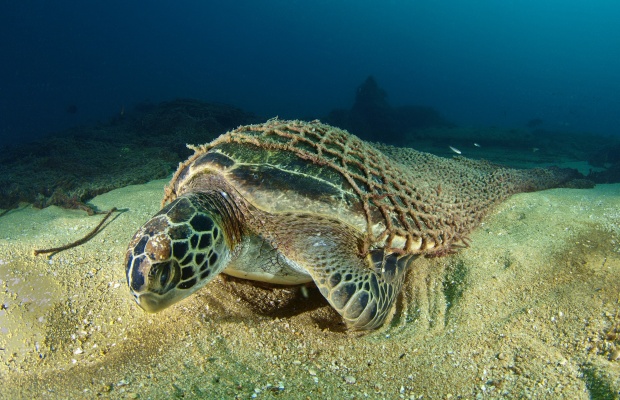
(picture: http://whalesandmarinefauna.files.wordpress.com/2011/03/a-green-sea-turtle-entangled-in-a-commercial-fishing-net.jpg)
Plastic Pellets: Small pieces of plastic broken off of large
monofilament: Monofilament fishing line entangles animals strangling and killing them.
(picture:http://upload.wikimedia.org/wikipedia/commons/thumb/e/e7/Filet_de_pêche_DSC00632.JPG/220px-Filet_de_pêche_DSC00632.JPG)
entanglement: Over 267 species have been found to be harmed from entanglement. Entanglement can be from fishing line, plastic bags, 6 packs, etc. It causes suffocation, drowning and starvation.
(picture: http://www.crimemuseum.org/element/humpback.jpg)
Plastic bags: Many animals ingest plastic bags thinking they are food, killing around 100,000 animals a year.
(picture: http://bagitmovie.files.wordpress.com/2011/05/plasticbag-turtle-web.jpg)

(picture: http://whalesandmarinefauna.files.wordpress.com/2011/03/a-green-sea-turtle-entangled-in-a-commercial-fishing-net.jpg)
Plastic Pellets: Small pieces of plastic broken off of large
(picture: http://oceanmotion.org/images/impact/confetti_plastic_pellets.jpg)
Benefits of mangroves
The Benefits of mangroves:
- Nursery: Mangroves provide a Nursery and safe home for baby fish and a variety of other marine animals.
- Nutrients: What falls from the mangroves is called leaf liter, that breaks down into nutrients and is the begins the basic food chain.
- Sediment: Mangroves hold the soil down stabilizing the sediment on the shoreline
- Toxins: Mangroves filter toxins and nutrients.
- Buffer System: Mangroves act as a buffer system to the land, lessening the strength of waves caused by storms
- Ecosystem Corridor: Provides habitat and a connecting zone in the ecosystem
1.http://mit.whoi.edu/cms/images/oceanus/mangrove-600_81252.jpg
2.http://www.nhmi.org/mangroves/pic/w59.jpg
3. http://www.ozcoasts.gov.au/conceptual_mods/processes/images/sediment_process.jpg
4.http://soilquality.org/images/filtering.gif
5.http://ncp-dev.stanford.edu/~dataportal/invest-releases/documentation/current_release/_images/BeachProfile.png
6.http://www.rivercare.org/local/upload/ckresized/73/corridor_map.jpg
adaptations of mangroves
Adaptations:
- Stability: The Red Mangroves Prop roots and the Black Mangroves widespread roots give the mangroves the stability it needs in the water and on the shoreline.
- Salt: While most plants cannot live in environments with extremely high salinity, mangroves salt tolerance allows it to thrive in extreme amounts of saline.
- Oxygen-poor: Mangroves grow in waterlogged soils which do not contain much oxygen. They have an adaptation of specialized roots that get gasses and air to the underground
- Viviparous: The seeds of the tree remain attached to the tree and germinate before they drop. It grows propagules and drops into the water until it can find soil.
- Seeds: Some mangroves have an adaptation of producing seeds that float, the tide carries them away and it avoids young plants being too close together
1.http://w3.shorecrest.org/~Lisa_Peck/MarineBio/syllabus/ch6producers/producerwp/cw/roots.gif
2.http://www.asknature.org/images/uploads/strategy/0ef4cce98e84127a384ff963259e4724/a3222d98ecae0afb0bd8758c7cea7a9c.jpg
3. http://ecology.hku.hk/jupas/Mangrove/Pneumatophores.gif
4. http://campus.albion.edu/florida08/files/2008/03/red-mangrove-seedling-propagule.jpg
5. http://oceanservice.noaa.gov/education/kits/estuaries/media/estuar07d_600.jpg
Arowana
Common Name: Arowana
Scientific Name : Osteoglossidae
Habitat: usually found in freshwater streams and rivers
Reproduction: The female watch over the young, and are a "mouth brooding" species
Prey: Carnivores, eat krill, worms, and shrimp
Interesting facts:
1. Jump out of the water
2. Have barbels that sense movement
3. lives approx 30 years
why: I chose this fish because it looks interesting and they are protected for being considered endangered.
photos: http://www.asia.ru/images/target/img/product/11/83/40/11834018.jpg
Scientific Name : Osteoglossidae
Habitat: usually found in freshwater streams and rivers
Reproduction: The female watch over the young, and are a "mouth brooding" species
Prey: Carnivores, eat krill, worms, and shrimp
Interesting facts:
1. Jump out of the water
2. Have barbels that sense movement
3. lives approx 30 years
why: I chose this fish because it looks interesting and they are protected for being considered endangered.
photos: http://www.asia.ru/images/target/img/product/11/83/40/11834018.jpg
Subscribe to:
Posts (Atom)


